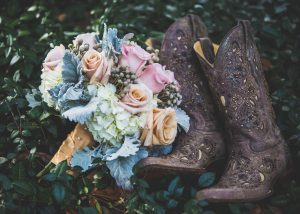The Sterling bride has spent countless days and countless pennies on planning every facet of the wedding day. Photographers train to be certain that they create images of carefully chosen or designed objects.

Sterling Captures Detail Shots That Become Memories.
David Williams, world famous photographer and teacher of countless Wedding and Portrait Photography International classes once stated, “If a bride buys, rents, borrows or steals an object for her wedding, you can bet I am going to take a picture of it.”
Here at Sterling Photography, we wonder, philosophically, “Why are we so fascinated with each detail?” Perhaps it is because all of us have become very media aware in this modern society. In a sense, every one of us has become a photographer. It was Hyman G. Rickover who first said, “The Devil is in the details, but so is salvation.” Bridal magazines encourage brides to learn to become detail oriented, because even the smallest moment of a wedding day becomes a memory, and the details-or photographs of those details-will trigger that memory.
On the One Hand…
We almost “see” in terms of advertorial scenes or staged vignettes. What was once the purview of window dressers, advertising executives, creative directors and artists is now a do-it-yourself province of everyone who owns a smart phone, posts on Pinterest, or Instagram, signs up for Canva or Tweets a meme.
It is as if media fascination has affected our vision. If you don’t believe us, then check out how many of you have re-arranged your lunch for an immortal shot to post on Facebook—or check out how many friends have sent you posed food. Food photography used to be extremely specialized, and it still is, but that does not mean that everyone isn’t trying it out!
We do not mean to sound critical or negative about this trend. (No pun intended!) However, many of us have become obsessed with a journalistic fascination for documenting details of our lives. Unfortunately, many such documentations are quite ordinary.
We cannot help but think it would be healthier to focus on unique details instead of trying to capture every detail in daily life. However, a wedding day is certainly no ordinary ho-hum day, not ever. On that single day, every detail will have gained monumental, even symbolic value.
On the Other Hand…
We might be unaware that a critical detail exists, much less that it has propelled us into an action or a relationship. . In the thriller, Vertigo. W.G. Sebald wrote

Sterling Captures An Embrace Under Lace.
“Tiny details imperceptible to us decide everything!”
Perhaps this is true. A dimple, a beauty mark, the arch of an eyebrow, the sweet sculptured curve of a slender waist, might even define a decisive moment like this one:
1. The subconscious of one person “sees” a special detail of another.
2. Next, attention is attracted.
3. Then, chemistry is given the chance to turn two people into lovers.
4. Such subconscious details might not even be consciously noticed until the photographer transforms them into art.
Since details are important keys to impressions and memories, they become very special keepsakes. This is why it has become so important for photographers, to capture unique details as we “cover” the special story of a moment.
This becomes even truer on a wedding day.
Details: Symbols of Feelings
Mike Gayle put it well in his novel “His ‘N’ Hers, when he stated, “In a relationship the details are everything because they remind you – just when you need to be reminded the most – why you fell in love with someone in the first place.”
With all of this back-story in mind, we now turn our attention to some of Sterling Photography’s specific detail shots. We also will introduce three of the technical qualities what make them art. Indeed, these three qualities make them special, personal icons for the wedding couples.
Three Secrets of Wedding Detail Shots
Undoubtedly, the custom of shooting “detail shots” of a wedding began with the symbolic props that are essential to every wedding day: Rings, Bouquets, and Cakes. We know now that there are more individualistic symbols upon which to focus, but in the early days of detail shooting, these were the first “portraits,” of wedding objects, the first wedding “detail shots.” They were worthy of even an 8×10 in the bride’s wedding album. Because everyone loves to try detail shots, Sterling list the three secrets to collecting some artful ones below: Enjoy!
Sterling Lighting: A Scene Setting Image
1. No matter what camera you are using, be aware of where the light originates. You can do side-light, back light, or a blast of direct light with harsh shadows. Best of all, is often a nice, soft indirect light.
Lighting can affect sharpness in your detail as well as the mood of your shot. Note how the image above Sterling’s soft indirect light accentuates the delicate lace on the hem of the veil.
In the words of shooter, Cary Norton, “The available-light strategy makes a lot of sense for many photographers for several reasons: Good light is usually easy to find, it comes in all varieties (flat, contrasty, bright, or dim), and, when you’re lucky enough to find it, costs nothing.”
A wedding is simply not the time and place to drag in a dolly full of cords, light fixtures and soft-boxes for detail shots, as you would for a modeling session or a jewelry commercial shoot. So photographers like Sterling often rely on the simple quality of available light and the high level excellence of their camera skills.
Depth Of Field: A Sterling Technique

Depth Of Field Accentuates The Bride’s Unique Garter.
2. In the jaw dropping, eye popping photo at the right, the bride is in very soft focus because the object of this memory making shot is the garter she holds up for the camera. Notice how this technique enriches the joyous emotions of the moment.
This photographic concept is not as difficult to understand as many people pretend. Depth of field is simply how far into the forced distance an object stays in sharp focus. Thus, “A basic definition of depth of field is: the zone of acceptable sharpness within a photo that will appear in focus.” For delicate objects like carved details on a ring, you want a shallow depth of field. If everything in sight is focused sharply, the ring gets lost in the confusion of background and distraction.
Texture: Sterling Creates Moments That You Can Always Touch.
3. Another secret of a good details shot is texture. The combination of your choice of light plus your depth of field creates a three dimensional image, which will make your special object speak in the language of touch: smooth or rough, slick or matte, sharp or soft. Thus, the visual artist will make the image appeal even more strongly to trigger memory when viewed by the couple.

Bridal Bouquet and Bridal Boots: Best Buds.
Sterling refers to his detail shots as “scene-setters,” or “memory-makers,” because to him they are more important, more emblematic of romance and love, than the simple term detail shots conveys.
His detail photographs are treasures of the heart, and of his art, dedicated to the bride and groom on their special day.
In the words of Belgian artist, Erik Pervernagie, such details matter because ‘they enable us to retreat from the trivial, daily worries and can generate delightful bliss and true joy in a sometimes frantic and chaotic life.”
So whether you enjoy detail shots in magazines or take them yourself on a Smart phone, or with a fine professional camera, now you know three secrets that will help them matter more to you and your memories.

